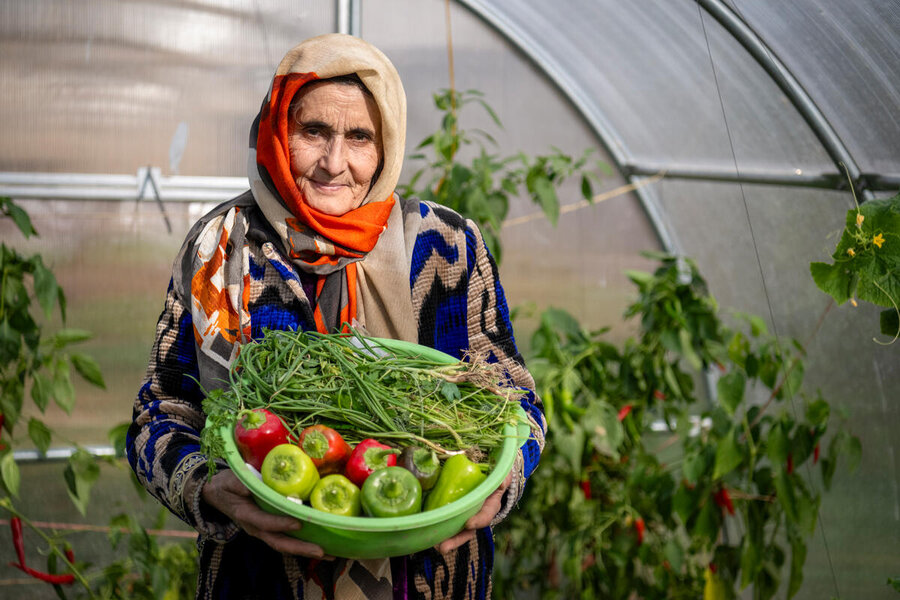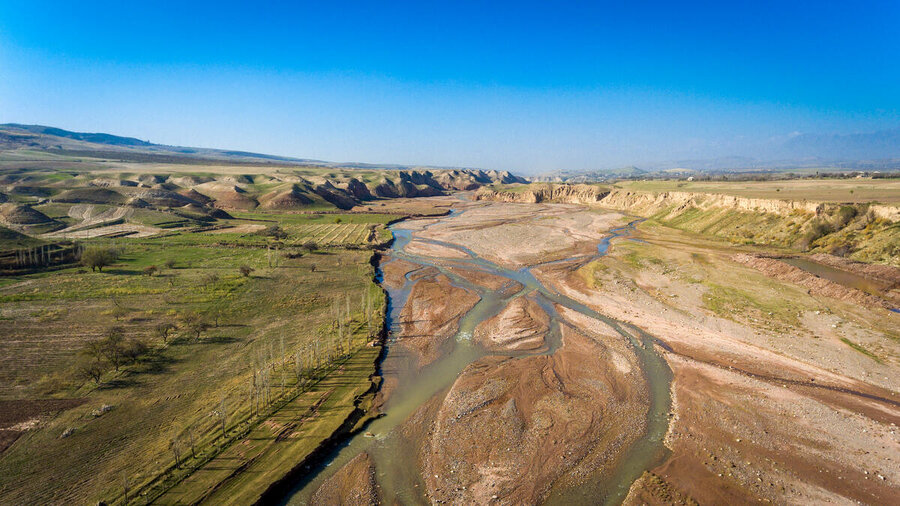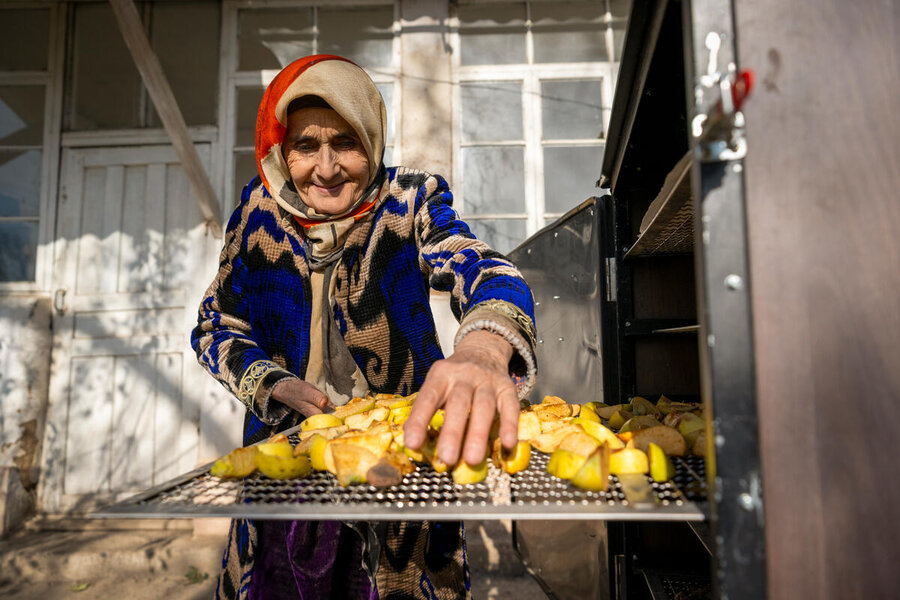Green thumbs in the greenhouse as climate change buffets Tajikistan

From a greenhouse at the bottom of her garden, Sharifamoh Solihova is cultivating her own solutions to a changing climate. Here in this remote, mountainous slice of Tajikistan, under a tarpaulin structure that serves as her hothouse, cucumbers, bell peppers, coriander, parsley and green onions flourish in all weathers.
“They taught us how to better prepare the soil before sowing, to add fertilizers, to ensure a balance of minerals and better control irrigation,” says the 67-year-old grandmother, of a World Food Programme (WFP)-supported project that offers both technical training and the hothouses to hundreds of mountain growers like herself.
In Central Asia’s most exposed country to climate change, the WFP project offers one answer to weather’s whims - which are increasingly threatening centuries-old farming traditions. It also offers a vital safety net for villages like Shifobakhsh, where Silohova lives, and where residents depend largely on what they can eke out of the steep and harsh lands that surround them.

Today, village old timers, like 63-year-old Sharif Zainiddinov, say they have never seen such erratic weather. During normal winters, “the surrounding mountains are covered in a thick blanket of snow,” he says.
But for months this past winter, not the slightest drop of rain - or snowflake - fell in the valley where he lives. On mild December days, buds sprouted near Zainiddinov’s home. Water trickled strenuously along a parched riverbed, drawing thin trenches along its path.
“When I was a little boy, it was very high and menacing,” Zainiddinov says of the river. “But nowadays, look at it. It’s so dry.”
In this landlocked country, where more than a quarter of the population lives on less than U$2 a day - and roughly one in three is malnourished - many farmers cannot afford to lose even part of their harvest. As climate change intensifies weather extremes, they face no other choice but to adapt.

For Solihova, that choice has yielded dividends. Thanks to the WFP greenhouse and new growing skills, she has seen her harvest multiply, surprising her neighbours. “She produces almost twice as much as we do,” said one, clearly impressed.
The yields have also surprised Solihova. She had cultivated a small vegetable plot before, but her new greenhouse really motivated her. Since then, she has continuously sought technical advice and recommendations.
Boosting the family meal
“She is by far my best student, the most curious and efficient,” says WFP agronomist Dalerjon Nabiev of Solihova, whom WFP continues to support. “We help increase her income so she has more options, and can improve her family’s nutrition and livelihood.”
Year round, whatever the season, Solihova’s harvests offer a boost to the family’s meal. Her grandchildren rush over at dinner time to enjoy her home-made soups. “They get sick less often and have more energy,” she says.

Others are also profiting from her greenhouse. Several times a week, Solihova heads to a small corner shop near her home, to exchange some of her produce for oil, sugar and even a bit of meat.
It’s a welcome exchange. What she is growing is “impossible to find in the village at this time,” says shopkeeper Mohiston Kamolova. “I’m proud and happy for her, and for me too, because it improves my little business.”
WFP also supplied Solihova with a solar dryer, to preserve and store her vegetables during the harsh winters. Her greenhouse offers further protection - and saves her crops from other weather extremes, which can include torrential and unexpected rains.
During the summer, she covers the transparent hard plastic roof with clothing, or soil and clay, to shield her crops from the intense heat.

“The temperature rose to 46°C last summer,” she remembers. “It would have been impossible to grow tomatoes in these conditions” without the protection.
Today, Solihova dreams of building a much larger greenhouse and expanding her business. She is sharing her experience with her friends and other village women cultivating kitchen gardens. She makes it her mission to ensure her tips will allow others to no longer depend so much on a capricious climate.


